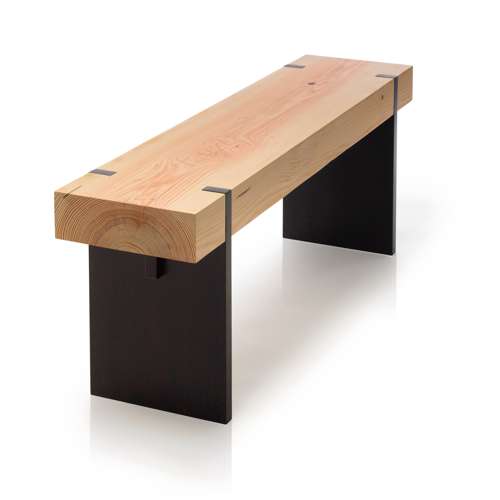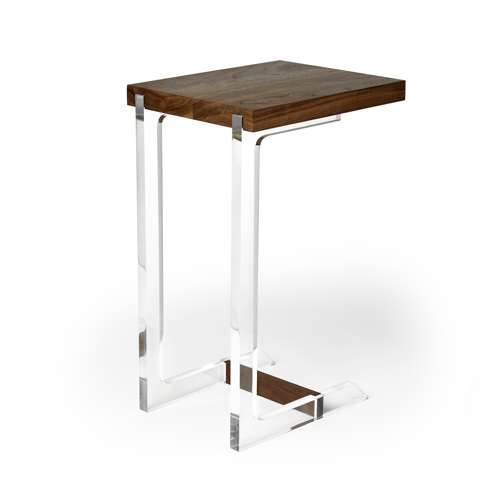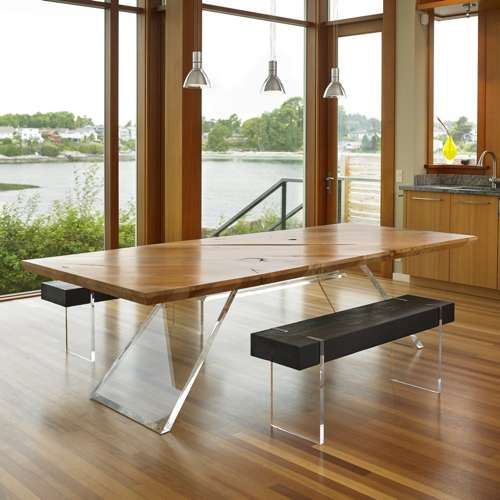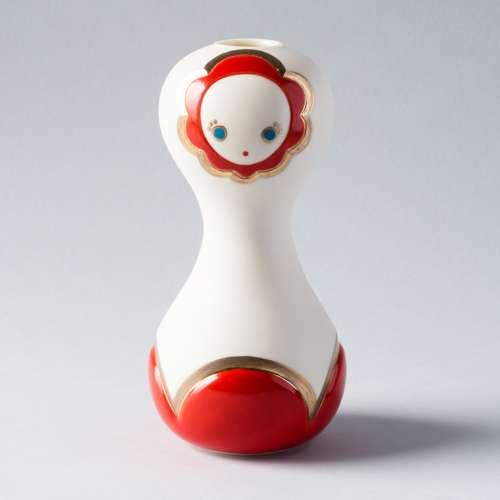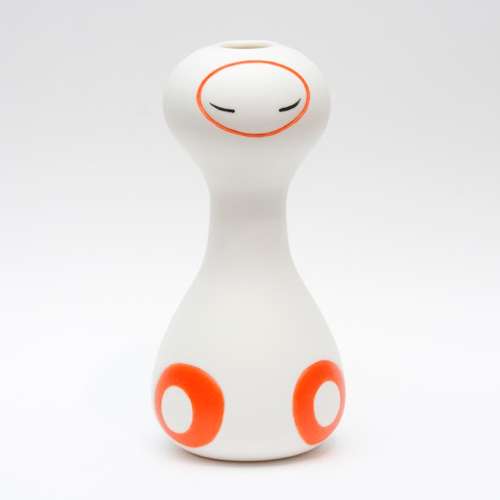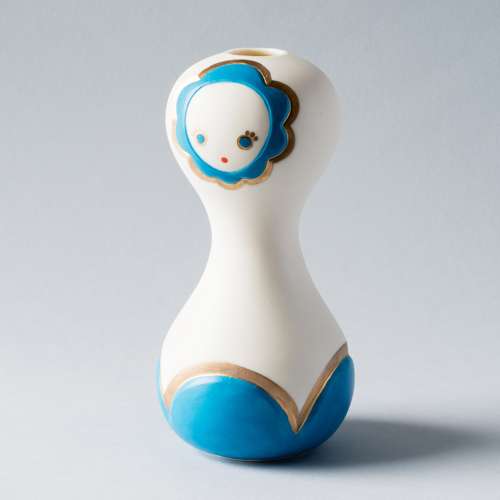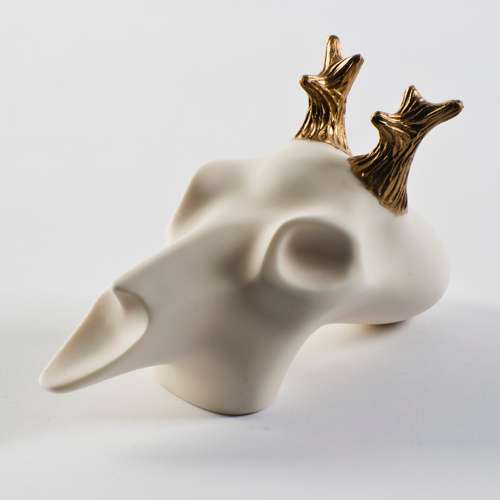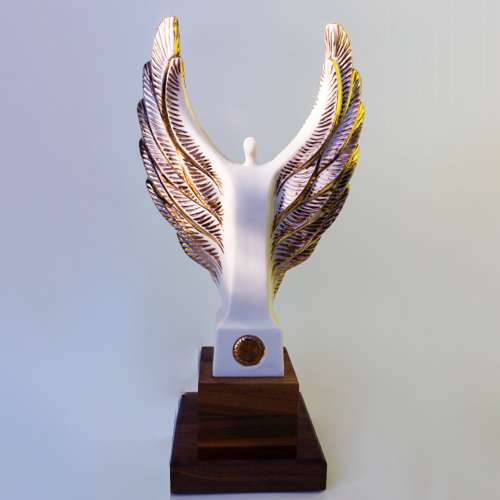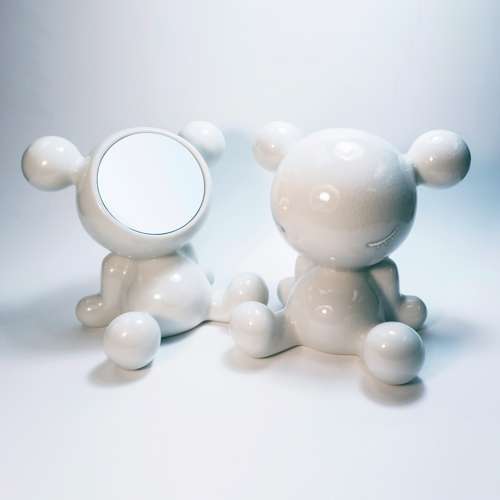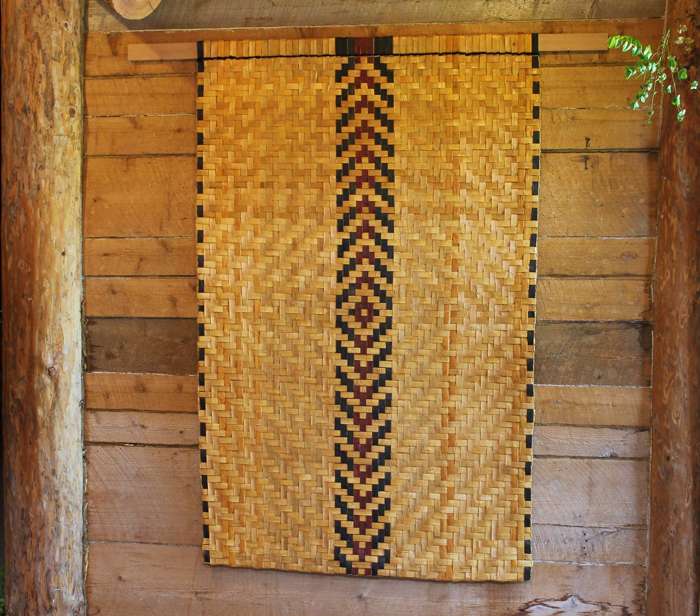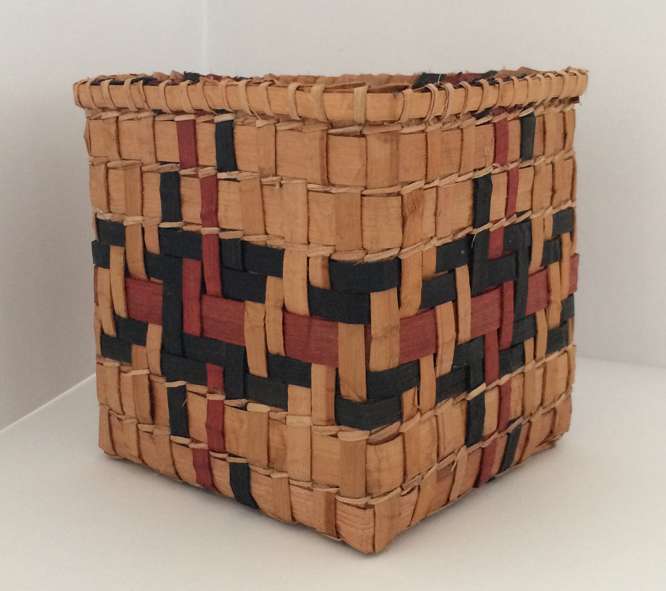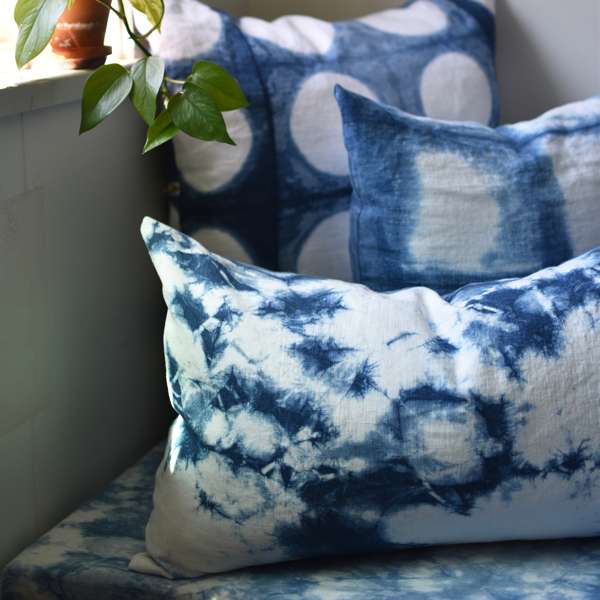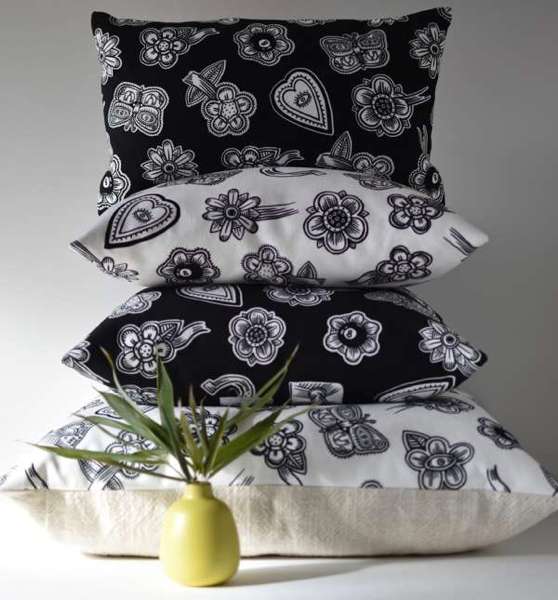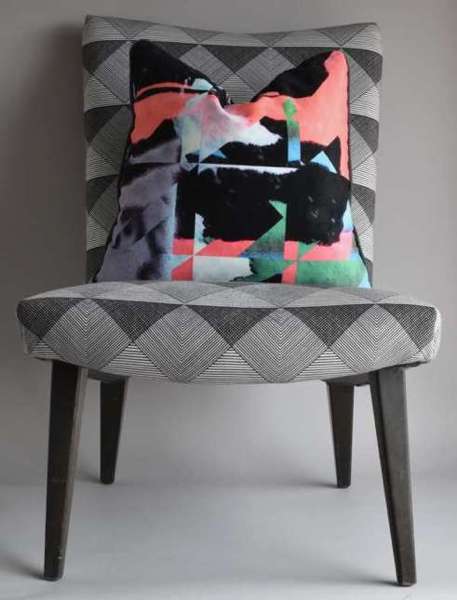Meet Your (Local) Maker
By Laura Goldstein
Imaginative, playful, and a passion for hand-made craft with enduring design describes Vancouver artisans whose unique, small production pieces can be found in the Pop-Up Shop at SwitzerCultCreative and online at Oden Gallery. Their labours of love easily translate into your own conception of what makes a comfortable and luxurious living space in 2019.
When Juxtaposing Wood and Acrylic Elements, Kirk Van Ludwig Brings Drama Into The Home
 Fashion rather than furniture has long been known to make political statements. But for Victoria-based designer/maker Kirk Van Ludwig of Autonomous, his Constantinople Table Setbegan as a metaphor for modern times:
Fashion rather than furniture has long been known to make political statements. But for Victoria-based designer/maker Kirk Van Ludwig of Autonomous, his Constantinople Table Setbegan as a metaphor for modern times:
“Constantinople (now Istanbul) was an ancient city besieged by diversity and contradictions and I thought, why not create nesting tables distinctly different in geometry, colour and materials, that somehow co-exist just like people should,” Van Ludwig explains. A whitened Ash round tabletop sitting on three asymmetrical acrylic legs gets cozy with a torched brown Douglas Fir square, offset by two acrylic legs. The juxtaposition works. While beautiful separately they make a bigger statement united. And, although we can’t promise it’s the answer to world peace, they certainly bring drama to our living spaces!
While Autonomous Furniture has become synonymous with a Pacific Northwest aesthetic, there’s always a sculptural twist that makes Van Ludwig’s pieces unexpected, such as the integration of acrylic into some of his wood furniture. Though not entirely an homage to the ‘70s, “I love it because it reminds me of the acrylic I saw as a kid in my parents’ home,” Van Ludwig laughs. “But, there’s a big difference as the museum-grade acrylic we use in our pieces is very durable (no scratches or clouding often found in ‘70s pieces,) and is actually very expensive. I love the way it lets the light through too.”
The CB1 Tablesports a Western Maple top the colour of caramelized sugar with striated grain on the bias. Lucite legs positioned underneath and arched from the middle of the table, give the illusion of the top levitating while providing ultimate legroom and easy cleaning.
Born in Edmonton, Van Ludwig moved to Victoria in 2005. “When I started the company in 2013, I really wanted to turn the industry upside down,” he admits from his 2,500-square-foot showroom and studio. “I wanted to focus on excellent craftsmanship and materials and we even delivered to our local clients personally,” he says. Van Ludwig and his team prefer to concentrate on about 15 classic designs that can be customized to clients’ preferences adding two to three new designs each year.
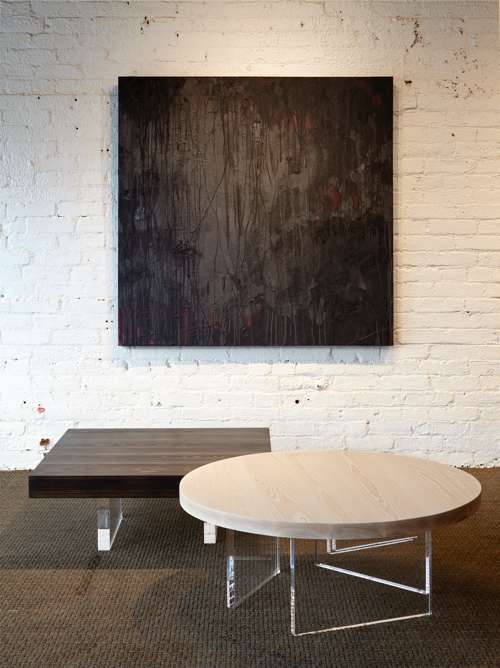 Most of Van Ludwig’s raw materials are sourced from all over B.C. “Remaining loyal to family-owned woodlots, some owned for three generations, is important to me,” he says. “I like to go out and choose the timber myself like that used in the Tillikum Bench.”A floating seat in a light Douglas Fir with matte black frame and legs gives a modern Scandinavian look to an entryway.
Most of Van Ludwig’s raw materials are sourced from all over B.C. “Remaining loyal to family-owned woodlots, some owned for three generations, is important to me,” he says. “I like to go out and choose the timber myself like that used in the Tillikum Bench.”A floating seat in a light Douglas Fir with matte black frame and legs gives a modern Scandinavian look to an entryway.
An unusual deviation from local sourcing is a large piece of Cedro, a fragrant cedar-like wood native to South America, left on a ship then made available to Van Ludwig. A pilot for a Russian super yacht has commissioned Van Ludwig to design and build a desk from the exotic wood that is most often used to make Spanish guitars.
Is it a side table or sculptural art piece? The Clair End Tablebecomes both when Van Ludwig gives the sturdy museum grade acrylic base an oil & wax-finished black walnut tabletop.
“You know, every furniture piece we make at Autonomous is debated, scrutinized, and tested,” he assures. “Is the bench the perfect height to put on ones’ shoes? Can you jump on the bench? Will the finish stand the test of time? Could the furniture piece be repurposed in the future?”
Van Ludwig’s shop has been working in overdrive lately in anticipation of his furniture debuting at New York’s Wanted Design ManhattanMay 18th-21stduring NYCx Design Week. Autonomous was selected as 1of only 10 designers across North America to showcase their work at this prestigious exhibition sponsored by Surface Magazine.
Nicholas Purcell Kicks It Up A Notch With Original Design And Sculptural Elements
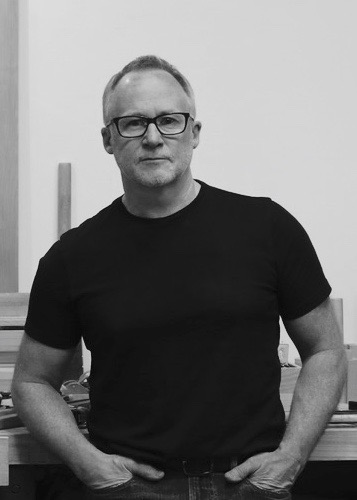 “In this last year I’ve found my creative side needed more feeding,” admits furniture designer and maker, Nick Purcell of Nicholas Purcell Furniture, Vancouver.
“In this last year I’ve found my creative side needed more feeding,” admits furniture designer and maker, Nick Purcell of Nicholas Purcell Furniture, Vancouver.
Usually focused on bespoke design pieces for clients, Purcell decided to further challenge himself by taking part in several city-wide events. His furniture is showcased at the SwitzerCultCreative Showroom 1725 West 3rd Avenue as part of the Crafted In the City event during Crafted VancouverMay 6th-30th.And, together with Crafted Interiorsat the Pipe Shop at the Shipyards, North Vancouver May 11-16th, they have all been the impetus for Purcell to experiment especially in cast bronze.
“It took me quite a while to find a foundry in Vancouver that was even willing to cast small artistic pieces and not just gigantic ship parts,” laughs Purcell at his studio in the rabbit warren of 1000 Parker Street.
“I love all the bubbles and how the patina varies from gold to pinkish flecks,” says Purcell of the sculptural, limited edition vanity stool in bronze and curly French oak. It’s part of the Finn Series (named after his youngest son,) and is an elegant, modern addition to a home, office, spa or yacht’s interior. The Finn Bench inbronze and walnut is wrapped in a luxurious imprinted leather with impeccable top-stitching that brings to mind fine Italian workmanship. “The sides of the FINNSeriesare cast in silicone bronze using the ancient process of casting in sand. My intent was to show the unrefined nature of this method which was achieved fantastically in the ripples and bubbles formed in the bronze,” Purcell explains.
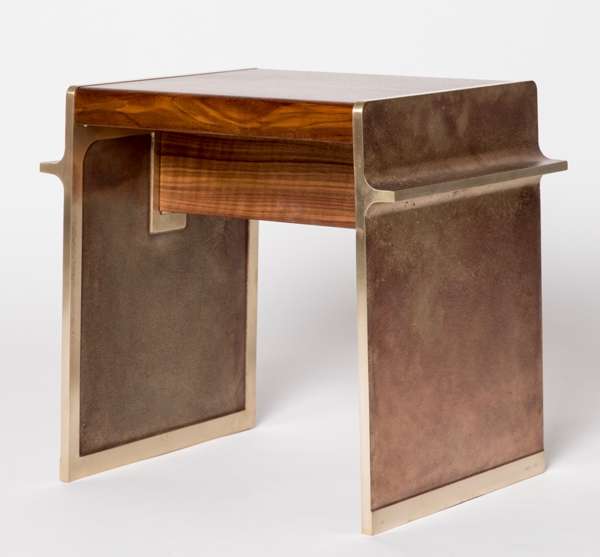
The Kick Lounge Chairand SideKick Ottomon were inspired by the Finnish “kicksled” originally produced in Sweden with long runners to get people moving outdoors in the cold months. Purcell’s rendition is so comfortable it has the opposite effect- you’ll want to curl-up in front of the fireplace with a glass of wine watching your favourite Nordic noir! Stylishly built in ash with exacting joinery and upholstered in buttery caramel English bridle leather, the adjustable head pillow is counter-weighted from behind the chair with a silicone bronze pulley. Pirelli strapping gives the classic piece a sporty look.
The INCENDIO Tablein blackened and white-washed ash is Purcell’s homage to his memories of wonderful camping trips with his family in B.C. He carefully created the illusion of stacked logs on a campfire for the table’s base, a balancing feat that finally materialized from his countless drawings and scale models. Plans are in the works for both a coffee table and long dining table topped befittingly with smoked glass.
“You know Europe has this great history in furniture design and craft which I really appreciate and admire,” Purcell says. Born in England and originally trained as a graphic designer, he studied furniture -making under the tutorage of master furniture maker, David Charlesworth in North Devon. In 2000 he moved to Bowen Island B.C. where he established his studio then relocated with his wife and three children to Vancouver in 2010.
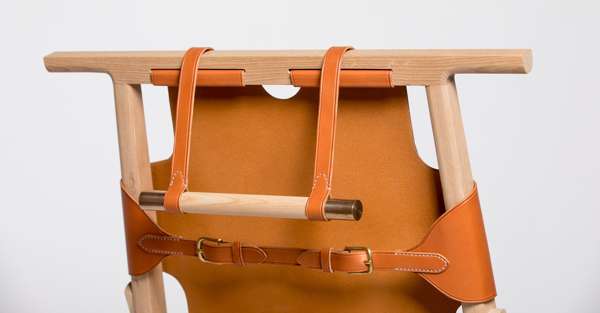
One of Purcell’s biggest compliments came from his adult children last Christmas. Unbeknownst to him, “they all had my logo tattooed on their arms,” he relates with a huge grin.
“I’m really passionate about my work especially about original design and I find that so many things are just replicated from photos on Instagram instead of putting the effort into designing something new,” the maker has noticed. “I think it’s better to make one fantastic piece rather than ten mediocre. You know, bespoke furniture-making is often solitary and I’d love to get together with like-minded makers in Vancouver on a regular basis to discuss design. There’s a lot of good work in Vancouver- let’s move forward and take it to the next level.”
Nicholas Purcell furniture can all be customized including upholstery and size through SwitzerCultCreative.

Ceramicist, Anyuta Gusakova expresses joy through clay
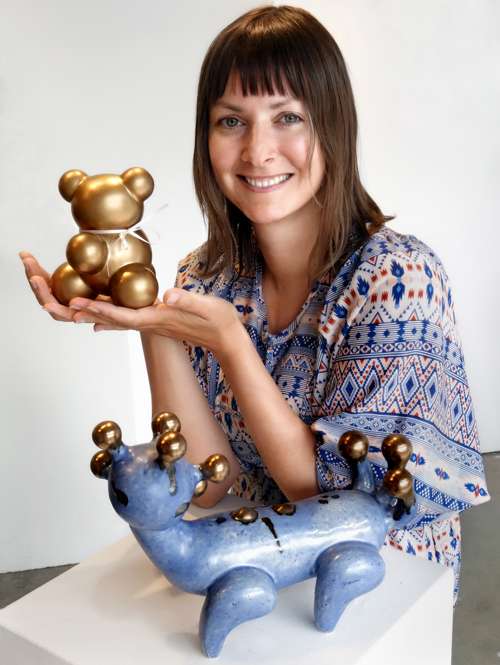
With a delightfully naïve style evocative of childhood, ceramicist and multi-media artist, Anyuta Gusakova’s decorative porcelain collections reflect her playful nature and love of multi-cultural myth and folk art. Her hand-made, small production pieces from Anyuta Studio.
“When I was a little girl growing up in the port city of Vladivostok, (it was still part of the Iron Curtain,) everything was very grey and dull. I remember classmates whose fathers were sailors, bringing to school colourful gum wrappers and little toys in crazy colours and patterns from Japan. I also had a book on Russian folk toys. Years later, as I began creating in porcelain, these pieces, like my Japanese and Russian Doll Vases, just emerged subconsciously,” laughs Gusakova from her Vancouver studio.
Her stylized big and baby MoBears are clever molecular atom re-creations of her favourite childhood teddy bear. Mishka the Russian Bear recalls the hand-painted exotic patterns of traditional ‘matryoshka’ nesting dolls while others display faux fur on porcelain, the latter making for the perfect pet without the cleanup!
Gusakova’s edgy Spirit of the Woods OLEN Deer Skull Collection was inspired by a real deer skull found in a forest in B.C. The abstract porcelain sculptures of which several are embellished with gold branching antlers, can also be wall-mounted, used as tabletop décor or bookends and evoke a spiritual connection to nature.
Recently, Gusakova won the 2017 national design challenge to create the Canadian Legend Award initiated by the Canadian College of Performing Arts and The Canadian Heritage Arts Society. Her Wings of Inspiration statuette was presented to 16-time Grammy Award-winning music producer, David Foster in his hometown of Victoria.
Like gardeners plunging their hands into the raw earth, “It’s an amazing feeling working in clay,” confides Gusakova. “I experience an immense sense of joy through my art work and this is what I want to share.”
TOP PHOTO: Spirit of the Woods OLEN Deer Skull Collection by Anyuta Gusakova
***
Nature inspires the “Fraternity of Antler, Beak and Claw” for ceramicist, Russell Hackney
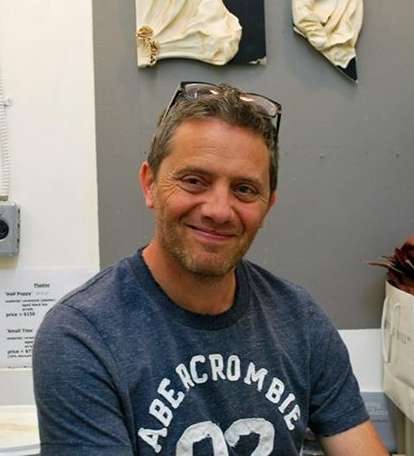
If you grew up loving Beatrix Potter’s watercolour illustrations, reading The Chronicles of Narnia or the beloved owls in Harry Potter books and films, Russell Hackney Ceramics will evoke the same joy in nature’s simplicity.
A third- generation ceramicist from Stoke-on-Trent England, Hackney immigrated to Bowen Island with his wife in 2002. He applies his specialty of delightful animal embossments to his ceramic vases, canisters, cookie jars and lanterns with meticulous detail, capturing each creature with subtle humour without looking cartoonish.
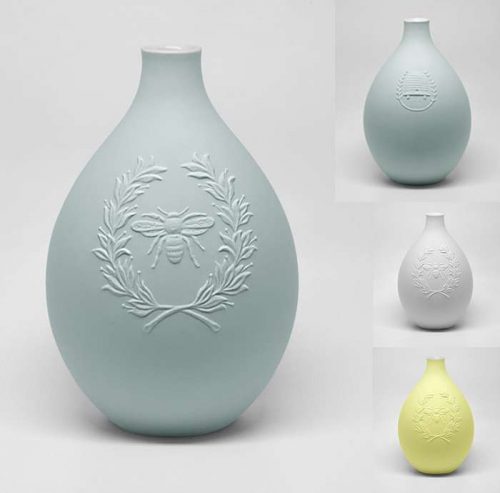
“At 16, I apprenticed with my father, a Master Ceramicist, in the family business modelling 60-piece dinner services and tableware for large companies like Dudson in Stoke-on-Trent. Later in my 20s, in celebration of their 200th Anniversary, I modelled a replica of a 19th Century clock that was presented to HRH Queen Elizabeth when she visited their company,” reminisces Hackney from his Vancouver studio.
“My embossed Fraternity of Antler, Beak and Claw are represented by the deer who are so elegant and remain in the shadows; the owl is the watcher of the forest and the bear is the warrior,” he explains. Hackney often depicts the creatures wearing crowns on his ceramics, (the bear also wears a chef’s hat, very apropos on the Cookie Jar, safeguarding its contents.)
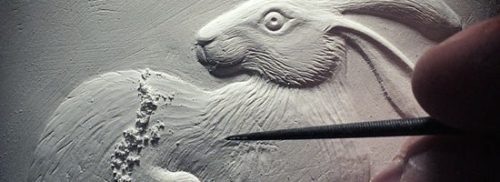
Bees and butterflies, hares and chaffinches frolic on churns, vases and vessels, in pale shades of eggshell, pink, butter yellow and robin’s egg blue. Turn the porcelain and several of Hackney’s ceramics are lovingly embossed with poetry, making them the perfect anniversary or house-warming gifts.
“If all art is in some way a reaction, then the pursuit of beauty is my reaction to the world around me,” says Hackney. “Where nature is at its most memorable, I draw inspiration from it.”
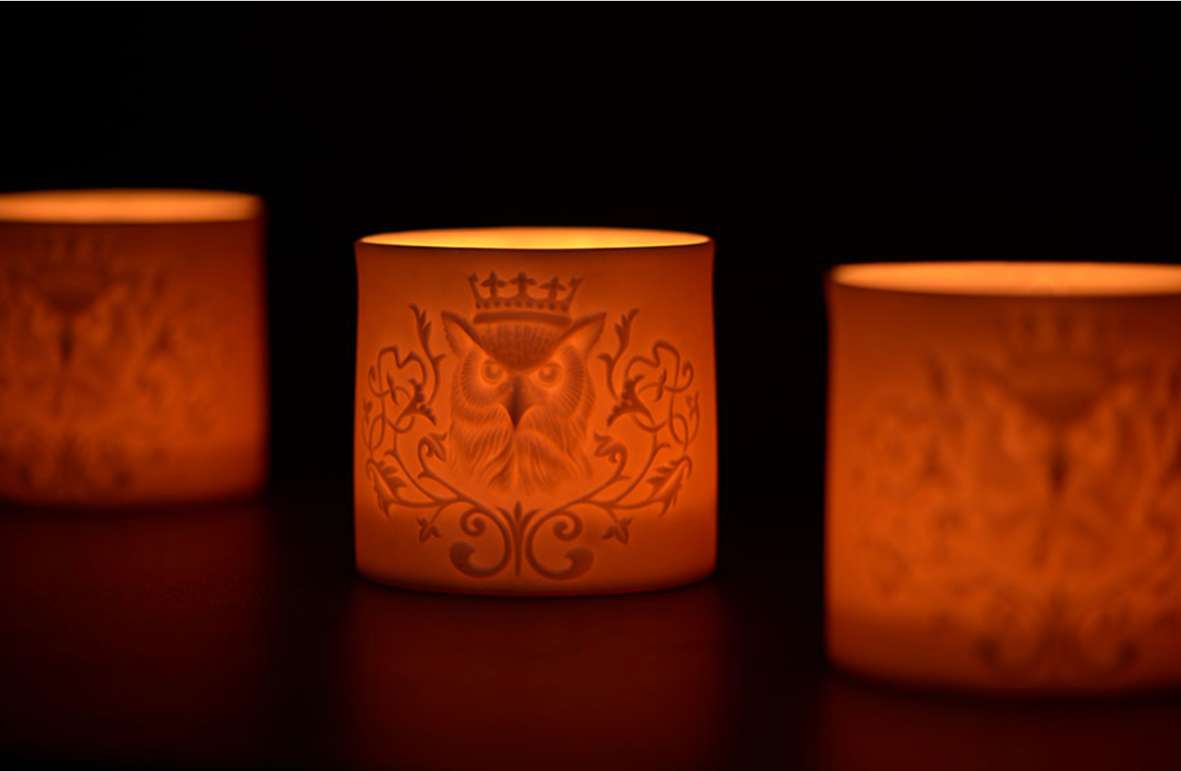
***
Indigenous weaver, Jessica Silvey, captures the spirit of the forest in her cedar baskets, wall hangings and mats
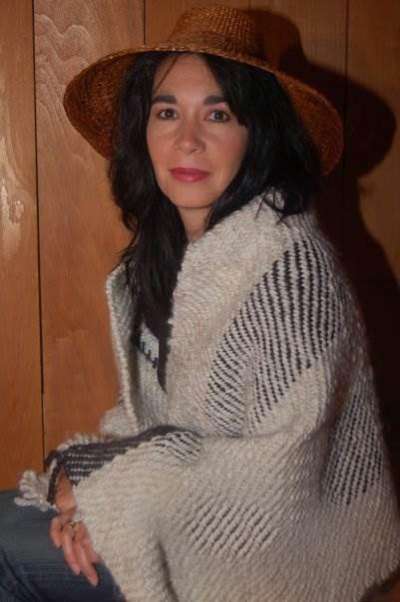
A childhood spent with her paternal grandmother fishing, gardening and harvesting cedar roots had a profound impact on fibre artist, Jessica Silvey. Those memories imbued in her a passion for traditional weaving techniques and patterns and a reverence for nature.
Silvey’s hand-made, aromatic woven pieces from her Red Cedar Woman Weaving Studio in Sechelt B.C.
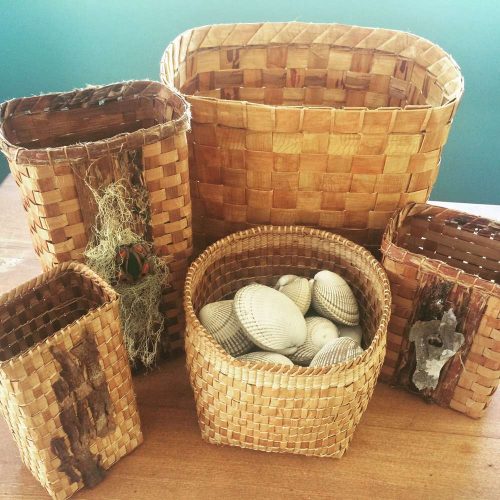
“I remember as a child being in awe of beautiful baskets woven by my aunts that were so huge, I could sit inside them and pull the lids over my head,” laughs Silvey, of Coast Salish and Portuguese descent. Predominately fishermen, Silvey was brought up with her extended family in Egmont, B.C. on 29 acres of waterfront. She was accustomed to seeing her father and uncles mending their nets and she accompanied her grandmother into the bush to gather bark and cedar roots to use for weaving baskets.
“I’m mostly self-taught and love the whole process of gathering roots in the spring when the sap is running. My kids used to tease me that the bathtub was full of cedar!” Silvey confides. “I love the golden patina of the wood. All the dyes I use in my pieces are natural from plants- red Alder bark for burgundy to orange shades and black from boiling iron or from roots buried deep in the mud. It’s a time-consuming and meticulous process but I feel so rich and contented when I leave the forest and the weaving is very meditative.”
Silvey sometimes incorporates found eagle down feathers from the beach into her baskets and wall hangings.
Recently she gave a cedar basket weaving workshop to 31 participants at the Museum of Anthropology (MOA) and her artistry is part of the current Exhibition, The Fabric of Our Land: Salish Weaving.
An appreciation of weaving, like everything made by hand, is undergoing a renaissance: “You know,” adds Silvey, “I see weaving as more than a craft. It’s a legacy because there is a part of yourself in everything you create.”
***
From filmmaker to textile designer, Stephanie Symns brings a painterly eye to her craft
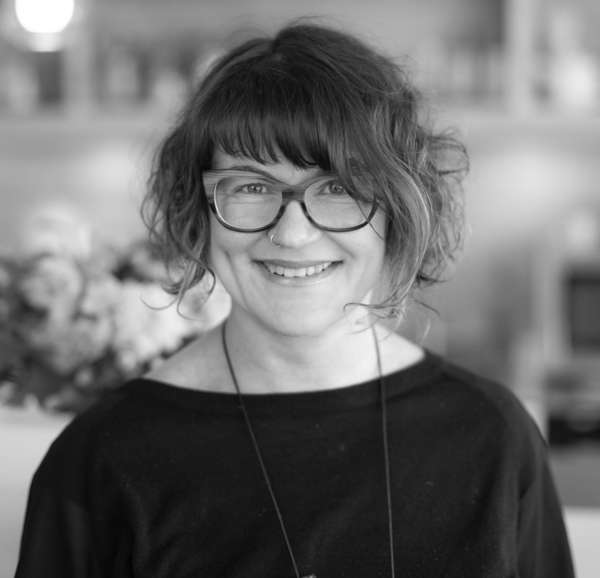
One of the biggest trends in home décor in 2018 are bold, colourful geometrics and optical illusions in furniture, wallpaper, lighting and textiles. Stephanie Symns Antipod Workshop, Vancouver, brings a mathematician’s meticulous process, combined with a painterly eye, to her stunning collections of hand-made, block and digitally printed pillows, runners and throws.
“I’m really interested in repetitive patterns from ancient Greek times, indigenous cultures to modern graphic design like the doodles and murals by contemporary British artist, John Burgerman,” explains the award-winning textile designer, a native New Zealander who moved to Vancouver in 2000.
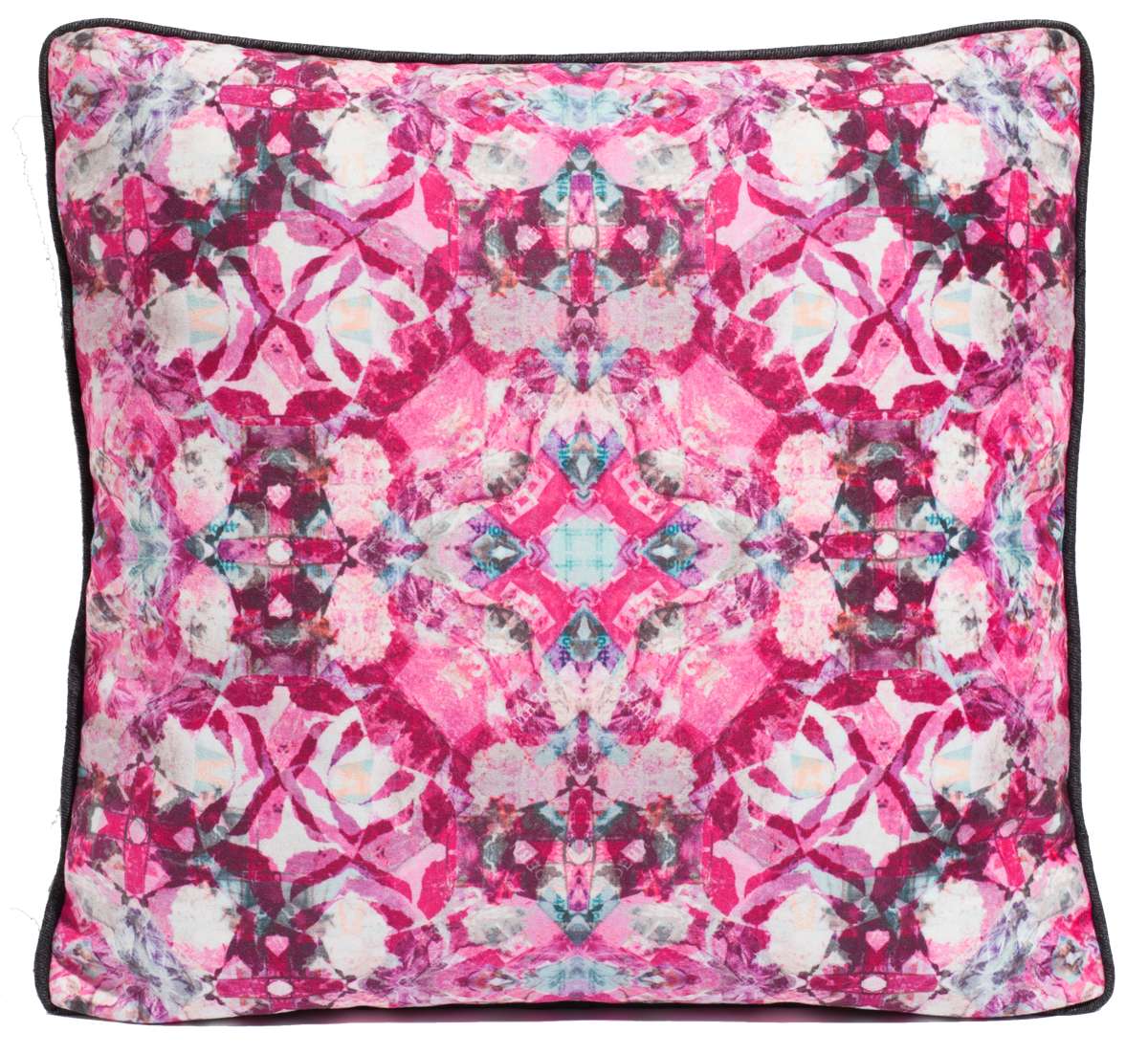
Ripped and frayed fragments from old posters on hoardings in Chinatown – even remnants of text, become inspirational fodder for Symns’ creations, re-born in tangerine, blue and black abstracts printed on velvet for her Artifact Pillows. Windows 3.0 Pillows (Symns’ wry commentary on urban life,) is an optical illusion in hot rhodamine pink reflecting “the patterns in rows of ubiquitous office buildings around the city.” Her vivid blue eco-friendly, hand-dyed Indigo Collection, riffs on the traditional Japanese technique of ‘Shibori ’ dyeing, originally used only for royalty and the samurai. Look through a kaleidoscope and you see the DigiFlora Throw Pillows. Symns photographs small details in her everyday environment that when combined and digitally printed on fabric, makes for boldly graphic plush décor.
Says Symns,“I think that buying beautifully made durable goods that you love from people with a story to tell, is an antidote to a fast-paced world of mass production.”
***
Sholto Scruton melds tradition with modernity to create timeless furniture pieces built with respect for the environment
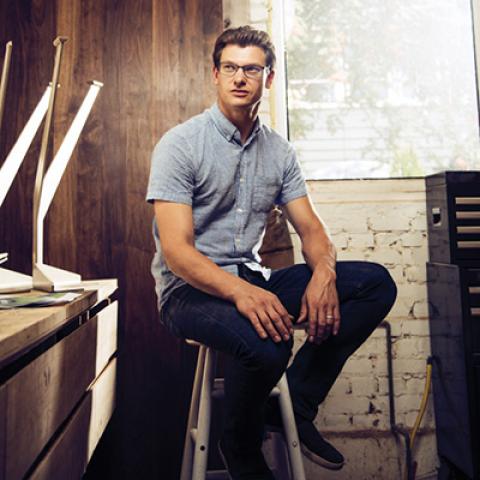 The importance of cultural heritage, sustainability and the responsibility of the designer to contribute to a healthy environment are foremost in Sholto Scruton’s mind when he approaches furniture design. In conjunction with Vancouver Design Week, he’ll be speaking on these subjects on Saturday, May 12that 1:00 p.m. and showcasing his intricately crafted furniture at SwitzerCultCreative 1725 West 3rd Avenue in Vancouver.
The importance of cultural heritage, sustainability and the responsibility of the designer to contribute to a healthy environment are foremost in Sholto Scruton’s mind when he approaches furniture design. In conjunction with Vancouver Design Week, he’ll be speaking on these subjects on Saturday, May 12that 1:00 p.m. and showcasing his intricately crafted furniture at SwitzerCultCreative 1725 West 3rd Avenue in Vancouver.
“I tend to make things that are purposely built with an intention to solve a problem,” he explains from his workshop, Sholto Design Studio in the Strathcona area of Vancouver. “For example, right now I’m working on benches commissioned for the Canadian Pavilion at the Venice Biennale by Vancouver landscape architect Cornelia Hahn Oberlander. We just got the approvals but it’s built on uneven ground from the Napoleonic times so the benches have to be stabilized to accommodate the landscape.”
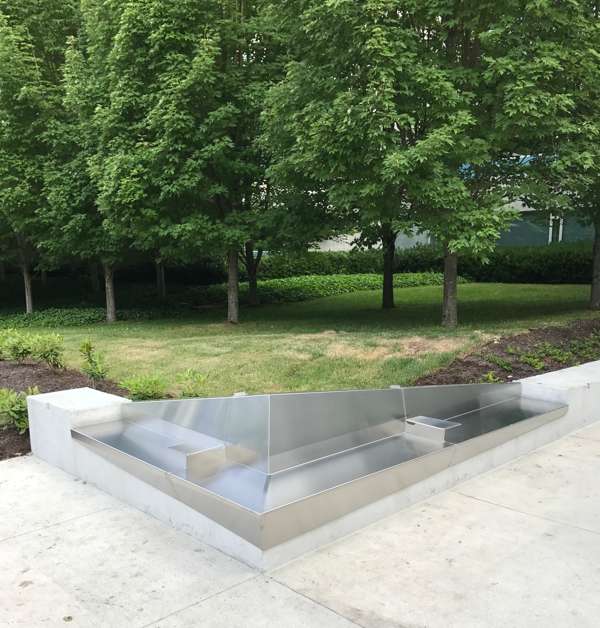 For another project, he’s designing 53 jewellery cases for the Bill Reid Gallery from 16 cedar logs pulled from the Sunshine Coast that will honour Reid’s Haida culture. Scruton is collaborating with renowned Haida artist, Corey Bullpitt to ensure cultural authenticity on all of the work.
For another project, he’s designing 53 jewellery cases for the Bill Reid Gallery from 16 cedar logs pulled from the Sunshine Coast that will honour Reid’s Haida culture. Scruton is collaborating with renowned Haida artist, Corey Bullpitt to ensure cultural authenticity on all of the work.
Born in Northern England into a family of furniture makers specializing in antique finishing (Sholto is a Gaelic name,) he’s a graduate of the Masters Program in Industrial Design at Manchester Metropolitan University. “I always thought I’d be working in plastics and metal,” he admits. Scruton immigrated and was raised in Northern B.C. and is married to Scandinavian graphic designer, Berit Hansen. “We come from cold places,” he laughs, “but the mix of cultures has shaped the way I design furniture to warm a space.”
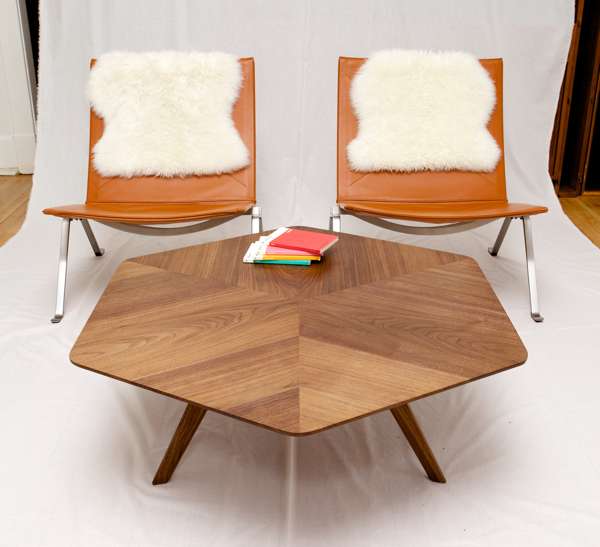 His Emerald Collection began when “I wanted something unique and thought of the ‘emerald cut’ of a gemstone.” Both the coffee table and side table, hewn from solid walnut or oak in a hexagonal parquetry wood top, “were designed to feel both light and strong, angular yet soft, organic and logical and hand-rubbed with non-toxic natural oil and wax finish,” Scruton explains. Legs are available in solid wood but conceived in plated rose gold, chrome or brass instills a really modern vibe to the piece as a whole.
His Emerald Collection began when “I wanted something unique and thought of the ‘emerald cut’ of a gemstone.” Both the coffee table and side table, hewn from solid walnut or oak in a hexagonal parquetry wood top, “were designed to feel both light and strong, angular yet soft, organic and logical and hand-rubbed with non-toxic natural oil and wax finish,” Scruton explains. Legs are available in solid wood but conceived in plated rose gold, chrome or brass instills a really modern vibe to the piece as a whole.
His rectangular Emerald Dining Table available in three sizes (or custom,) has been in great demand at Canadian Embassies and private residences in Barcelona, Brussels, Hanoi and Tanzania to name only a few.
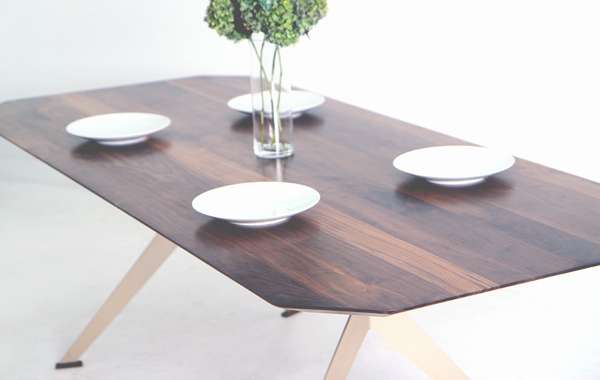 “I first built the Emerald Credenza for my wife who wanted something in which to store files, says Sholto. “But then I thought, ‘why not a beautiful cabinet that could also store records, a wine rack and even as a bar?’” And voila! Like a magician’s box, the sleek cabinet, assembled with light-reflecting mortise and tenon joints in white oak, walnut, black oak or fir, cleverly conceals the aforementioned options. Should you choose the cocktail service, The Emerald Credenza top opens to reveal a cutting board and compartments for all your bar-tending needs.
“I first built the Emerald Credenza for my wife who wanted something in which to store files, says Sholto. “But then I thought, ‘why not a beautiful cabinet that could also store records, a wine rack and even as a bar?’” And voila! Like a magician’s box, the sleek cabinet, assembled with light-reflecting mortise and tenon joints in white oak, walnut, black oak or fir, cleverly conceals the aforementioned options. Should you choose the cocktail service, The Emerald Credenza top opens to reveal a cutting board and compartments for all your bar-tending needs.
Teaching the business side of industrial design part-time at the Wilson School of Design at Kwantlen Polytechnic in Richmond, Scruton hopes he can impart a sense of social responsibility through sustainability and good manufacturing process to his students.
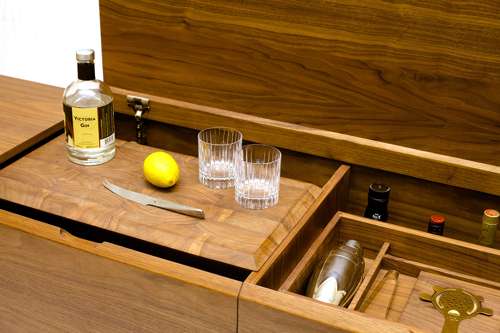 “I like to practice what I preach,” he says of the importance of durable, easily repairable furniture over trendy throw-away products.
“I like to practice what I preach,” he says of the importance of durable, easily repairable furniture over trendy throw-away products.
Instilling those values in his students also includes his 7-year-old son, Finn who is already handy with a hammer and drill and has built his first chair.

